We’ve now had the bees for about 2months. During this time, we’ve watched our four-frame NUC of about 2000 bees grow into a colony of probably 30,000 bees, possibly more.
We’d been keeping an eye on the bees every few weeks, doing partial hive inspections. Each time growing in confidence as we understood the process a little better and felt more comfortable around the bees. Luckily, our bees have remained nice and calm and 9wks in, and no one, nor the dog to our knowledge, has been stung yet. Winning!
During one of our mini inspections, we observed that our bees were now active across all ten frames in the brood box, with most of those frames containing some level of brood (eggs) or honey. To ensure we didn’t let them run out of things to do, we added the super box and flow frames to the hive in late Oct.
One of the cool things with the Flow Hives are the viewing windows, through which we could see plenty of bees working in the super, and from what we could see, seemingly beginning to build out the wax in the flow frames.
So, with a calm and warm Sunday forecast, we did our first full hive inspection.
First things first, we removed the roof and lid and took a peek at the flow frames. Happy and somewhat surprised to see how industrious our bees had been. The centre frames had plenty of wax being built out, and there are bees all through the super doing their thing.
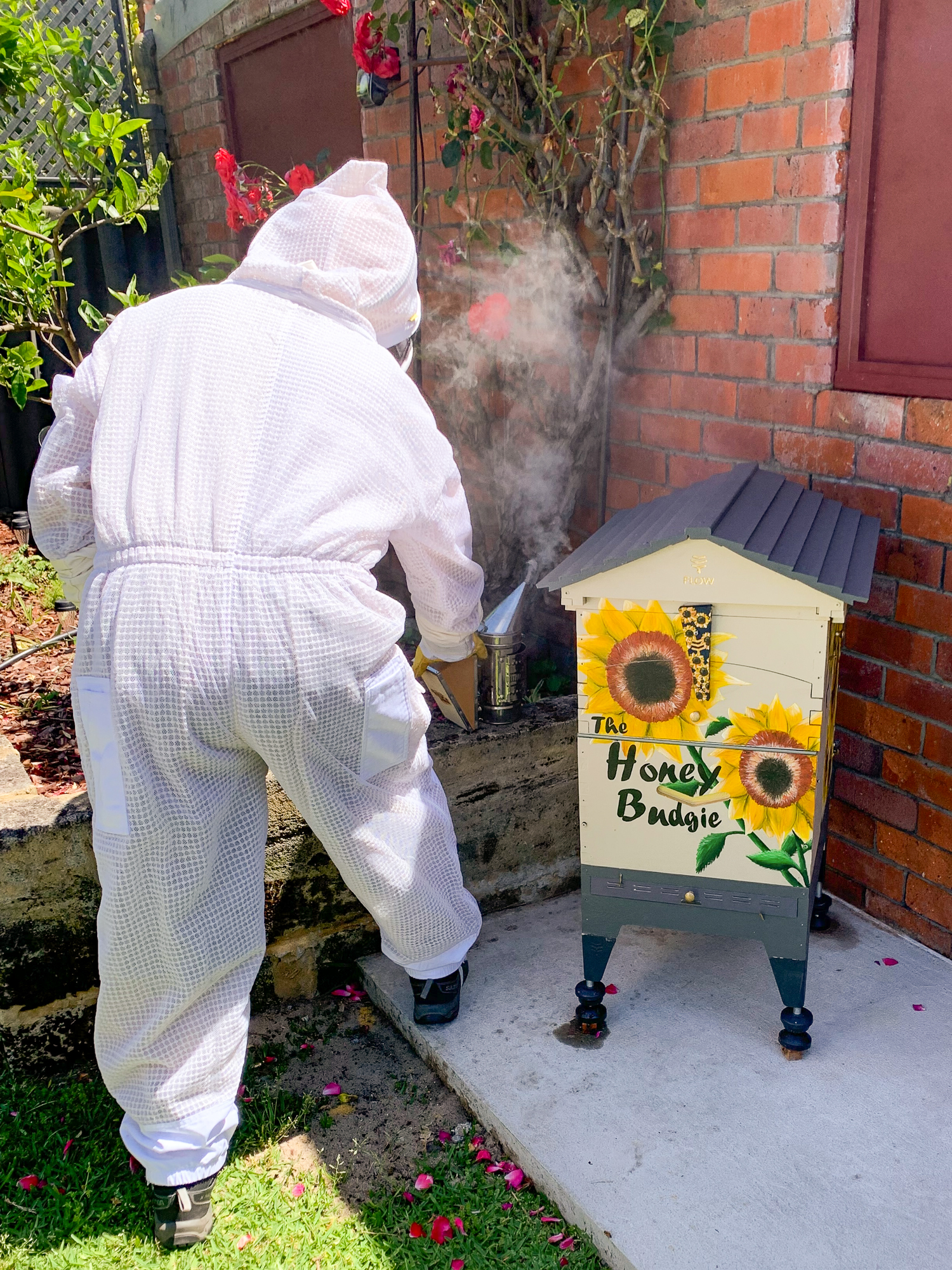
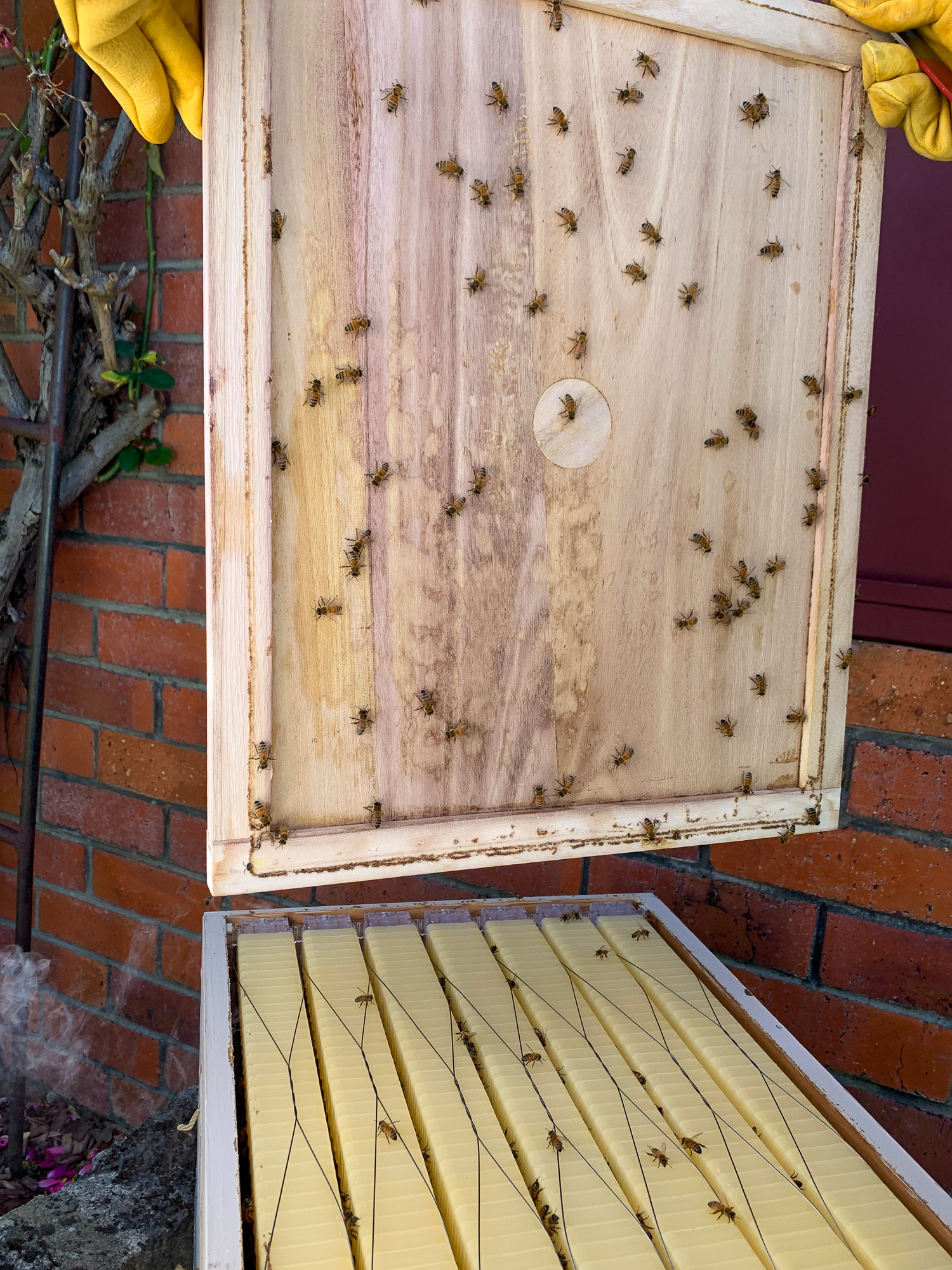
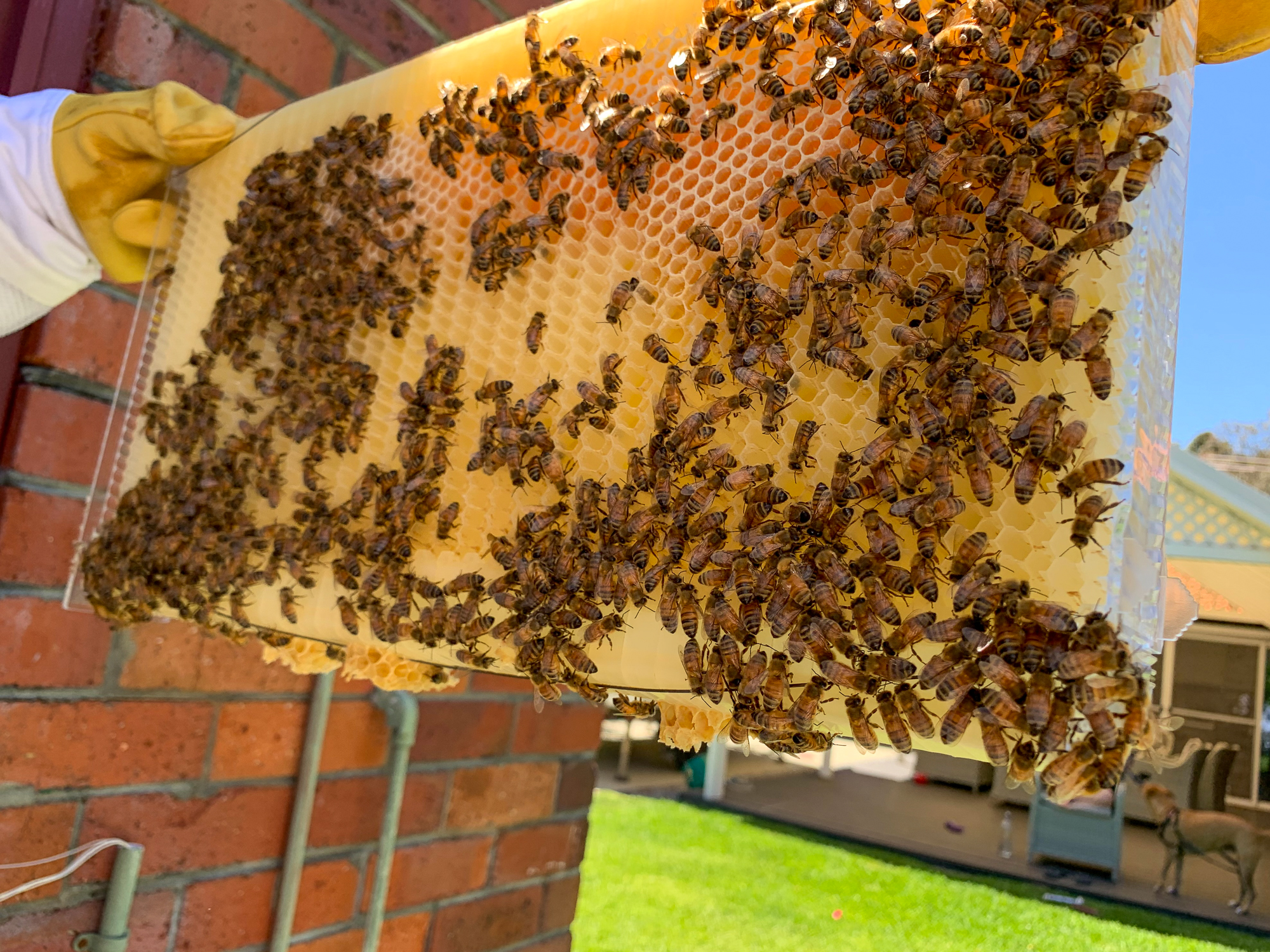
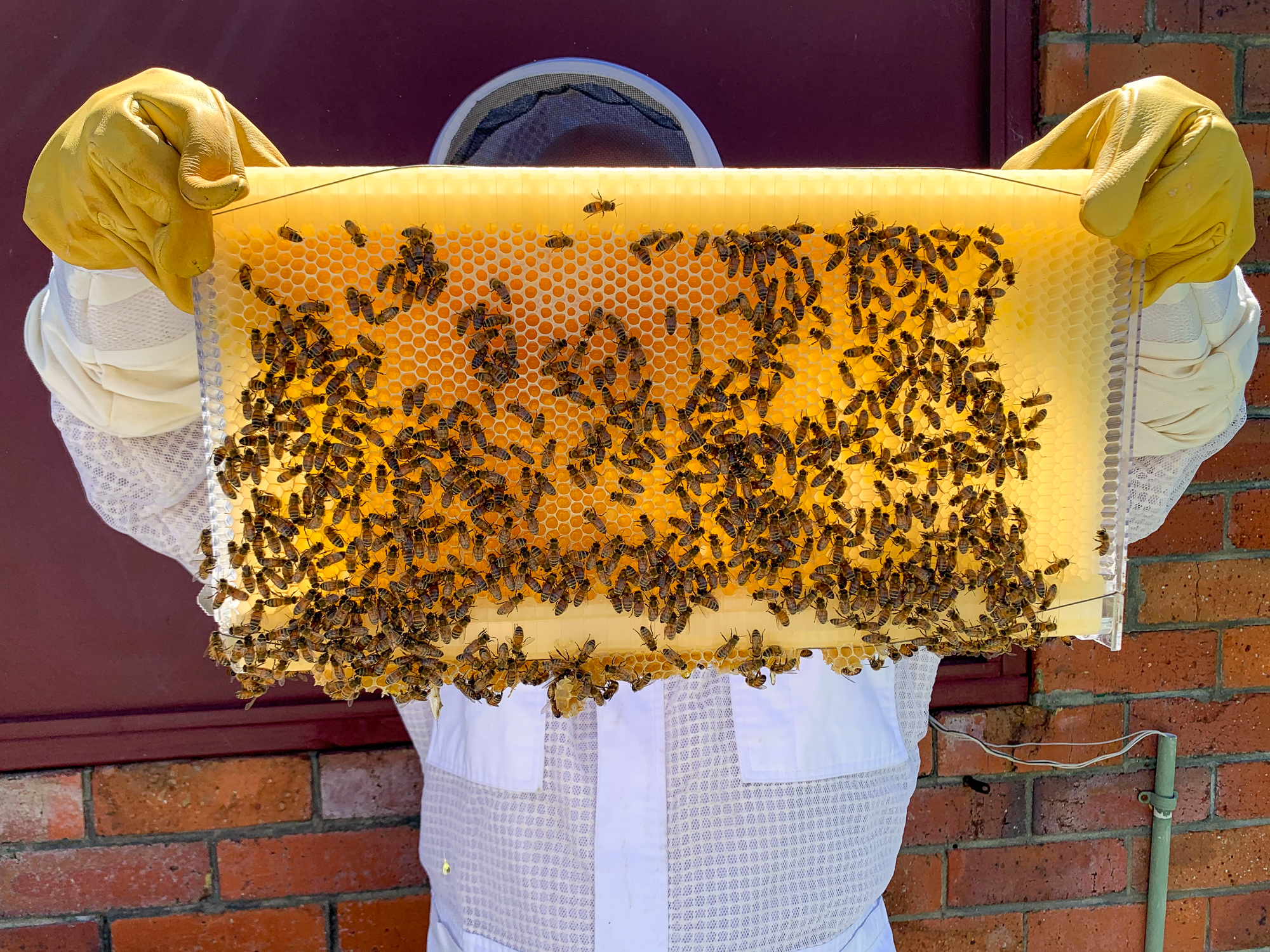
Moving the super box to the side, we removed the queen excluder, scraping off and saving the honeycomb, and commenced our inspection of the brood box frames.
Working from one side, we removed each frame at a time, inspecting and photographing both sides for reference. The photographs will assist with future problem solving if we ever have pests or diseases, but they also allow us to view and see how the bees are arranging their hive to best suit the conditions.
As per the following pics, all brood box frames now had good levels of activity, with the typical pattern of capped honey on the outsides, and the brood in the middle frames.
Sharp-eyed Madeleine even managed to spot our queen wandering around.
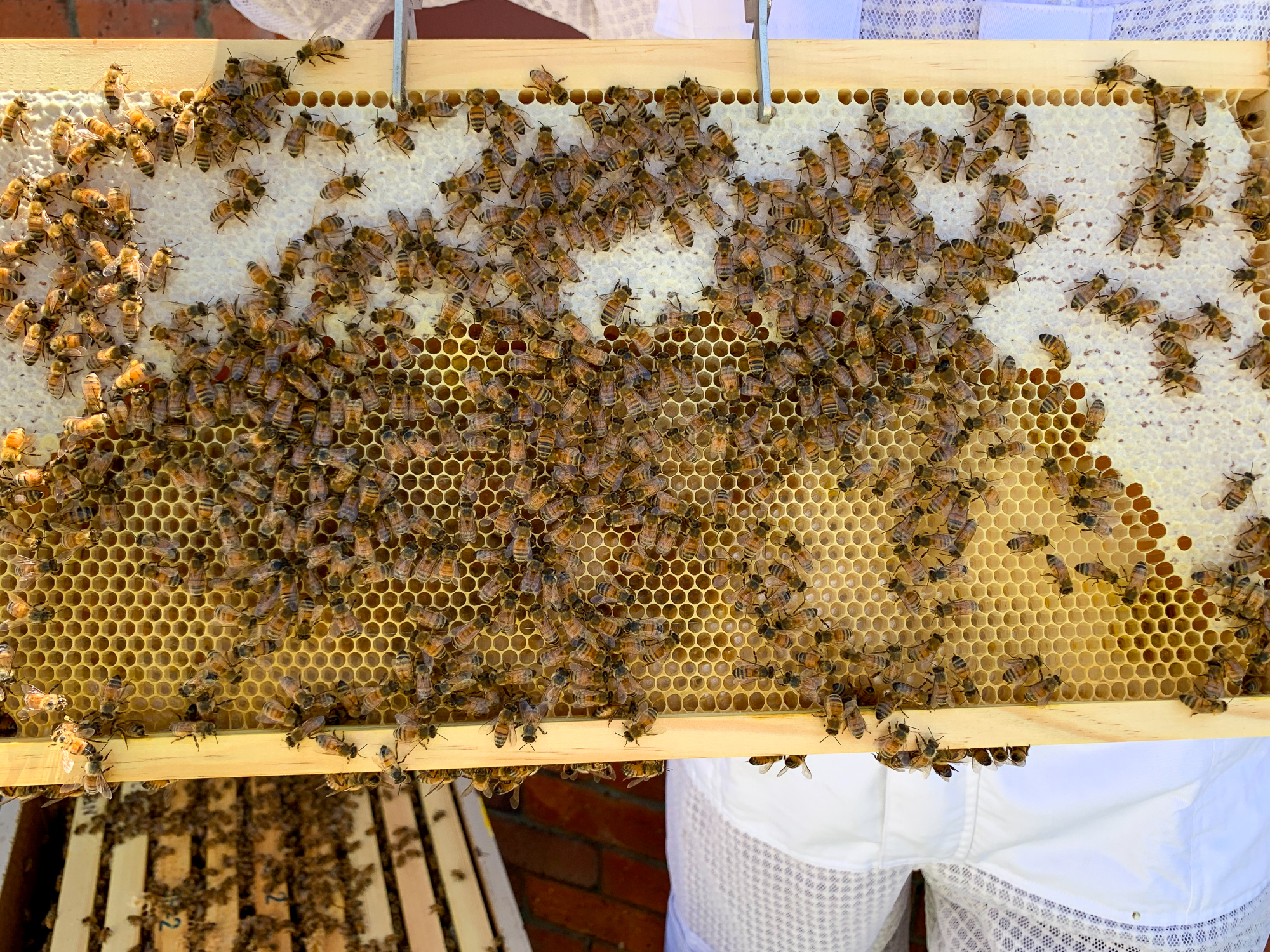
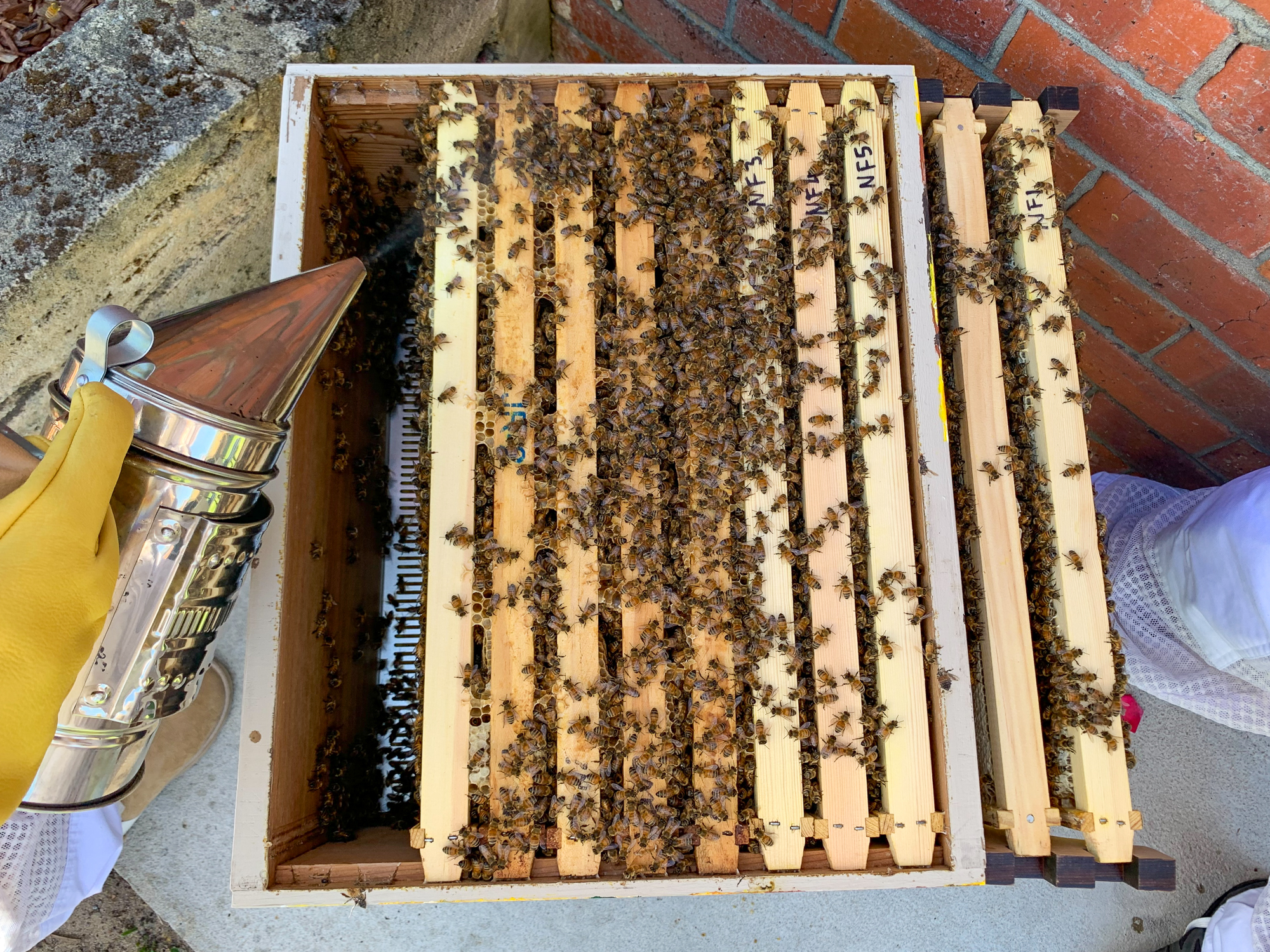
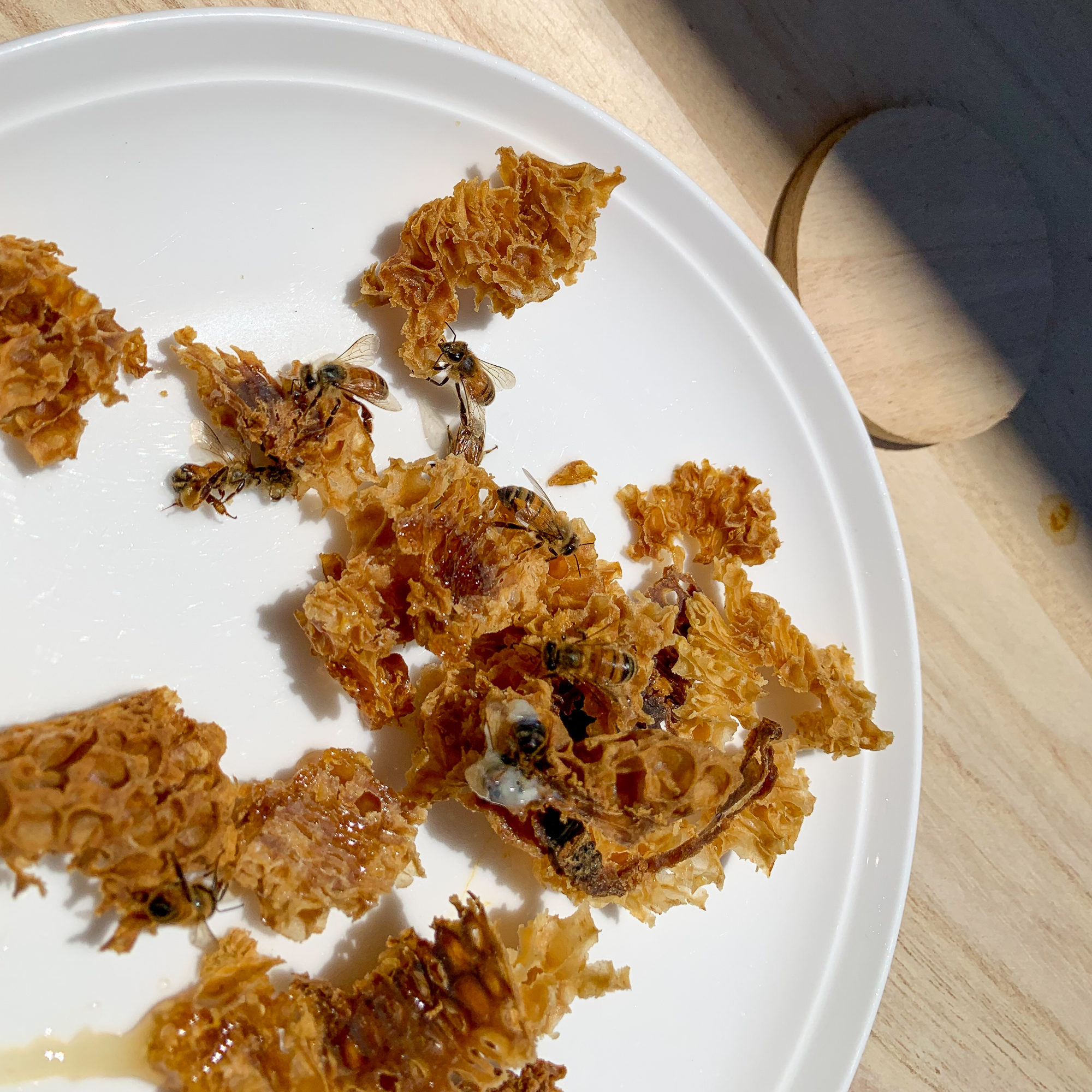
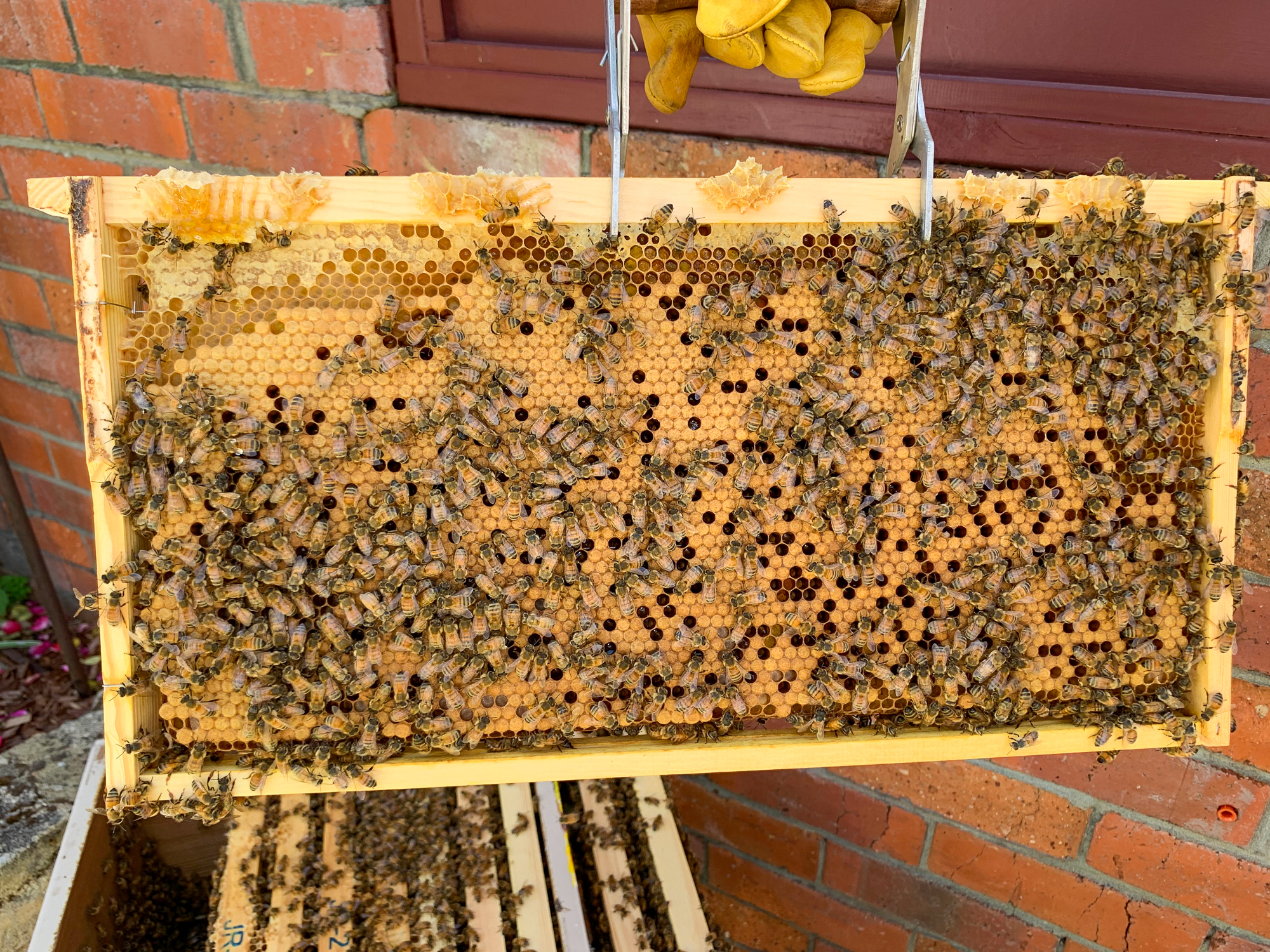
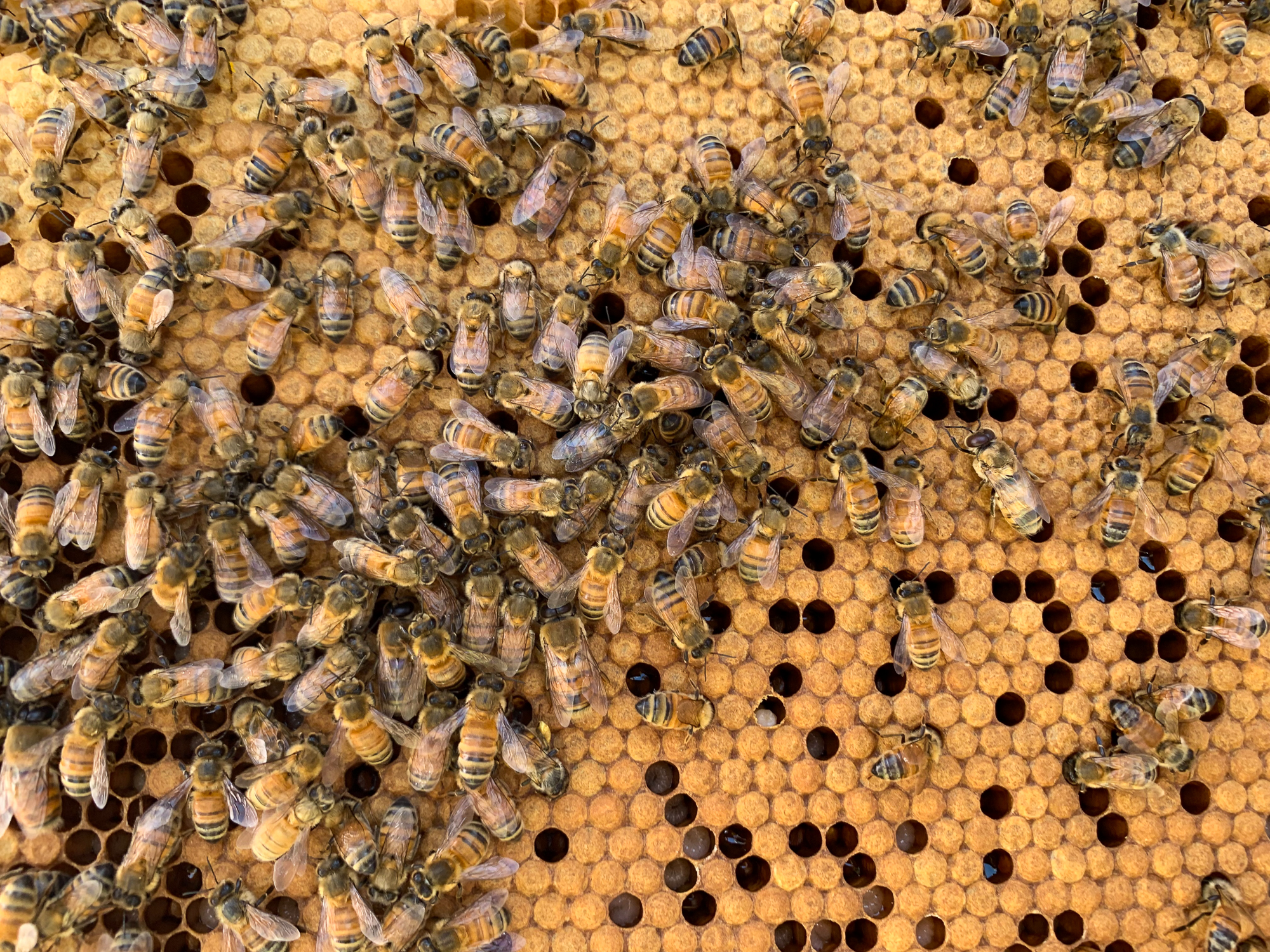
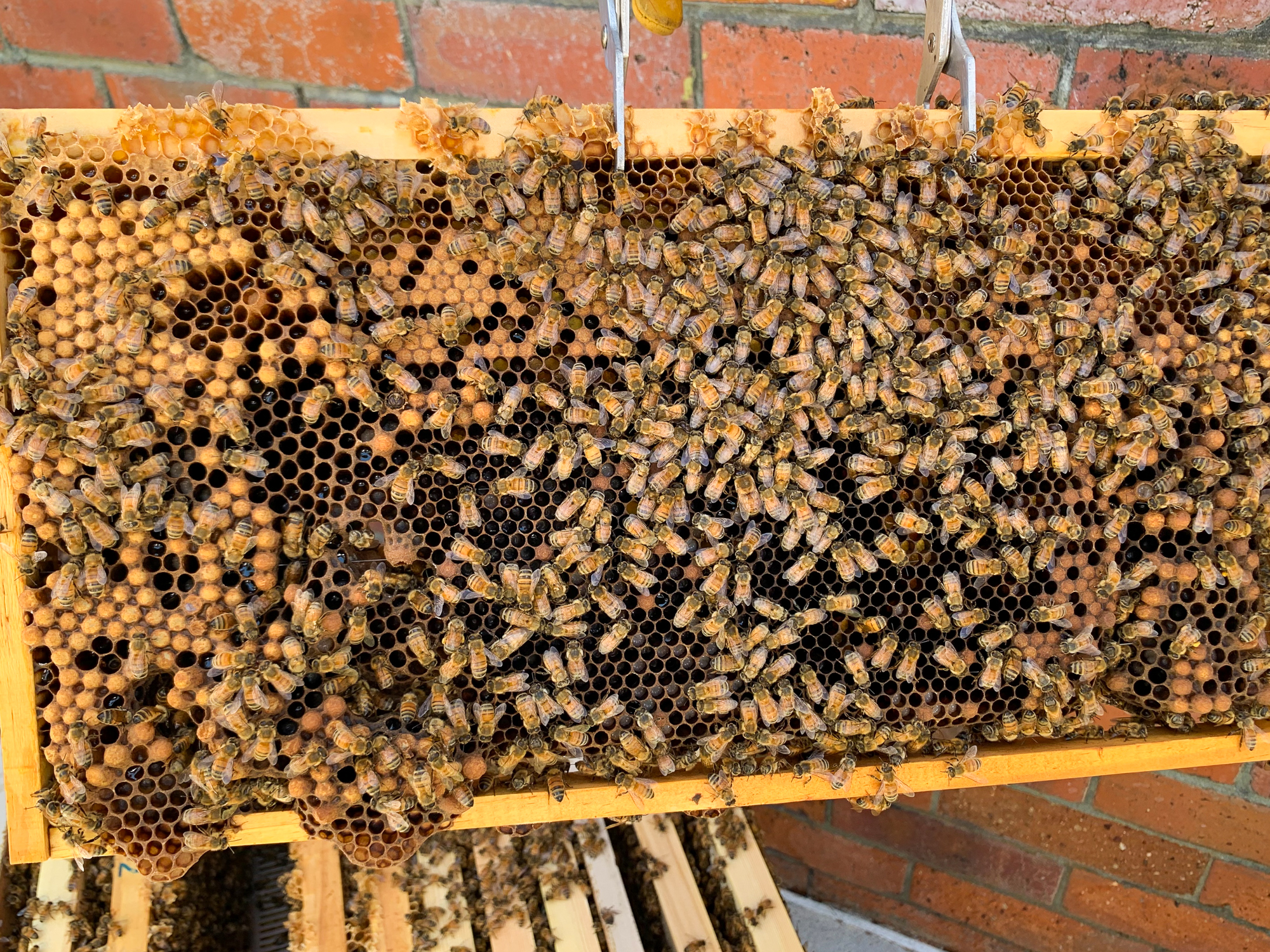
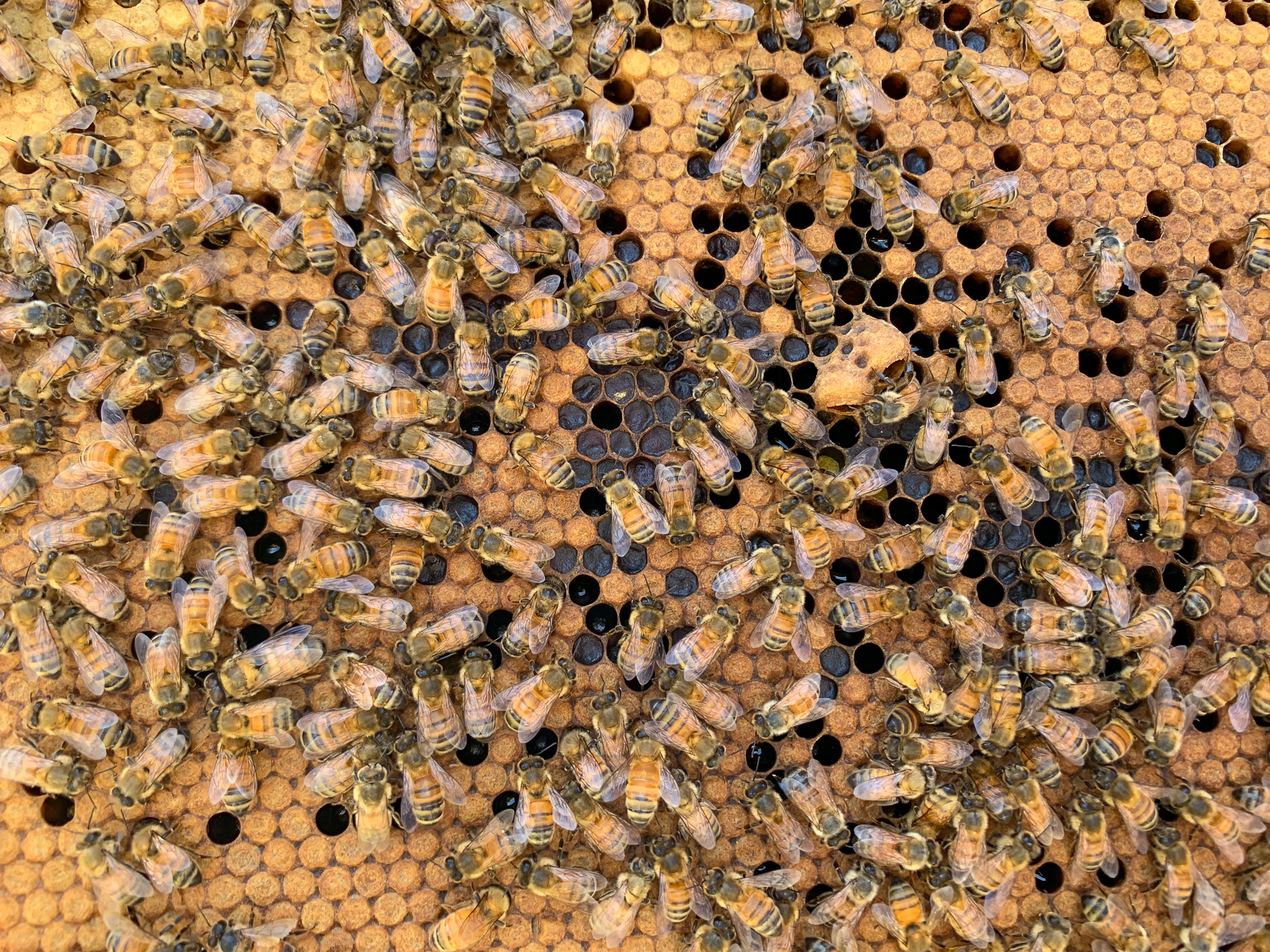
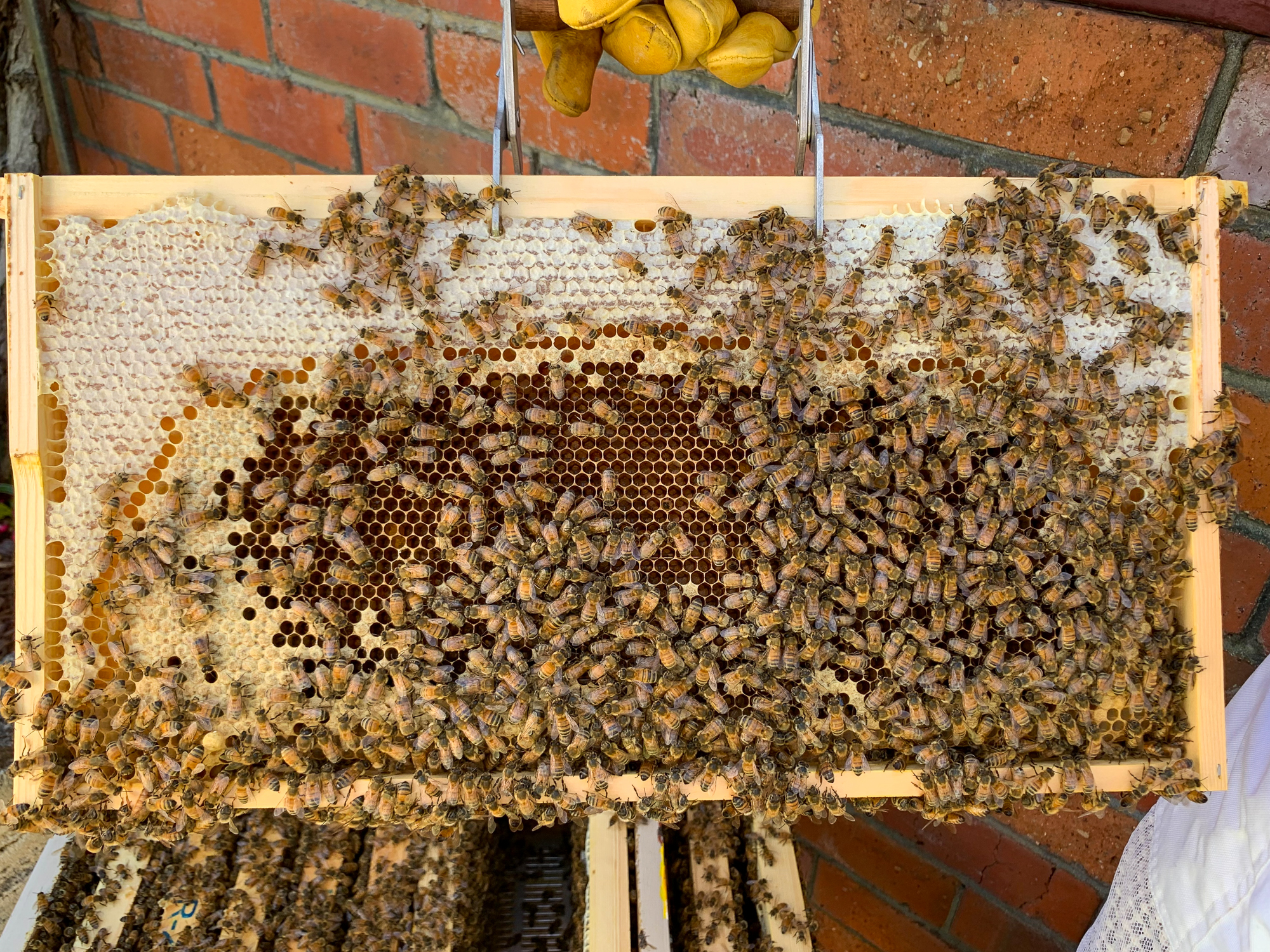
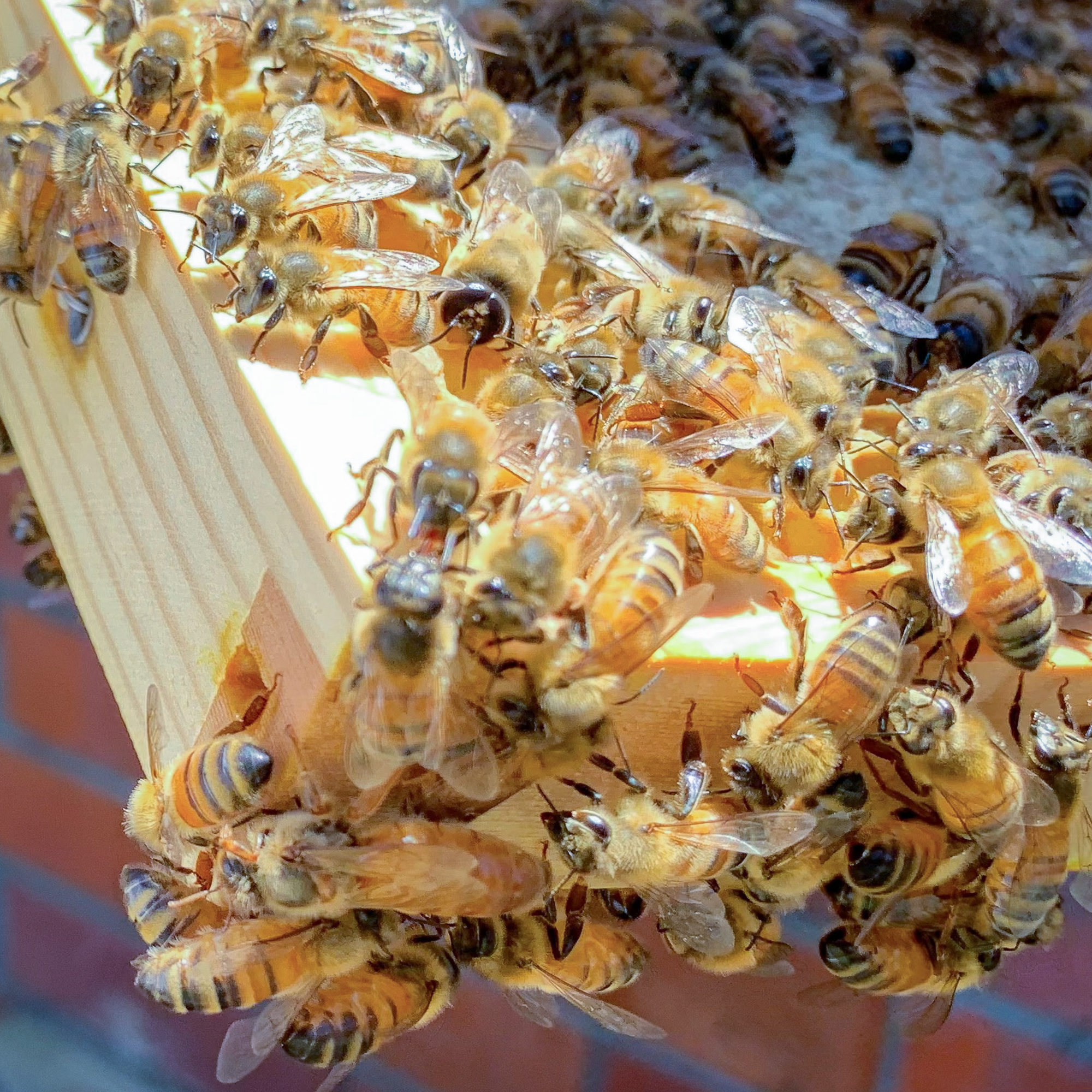
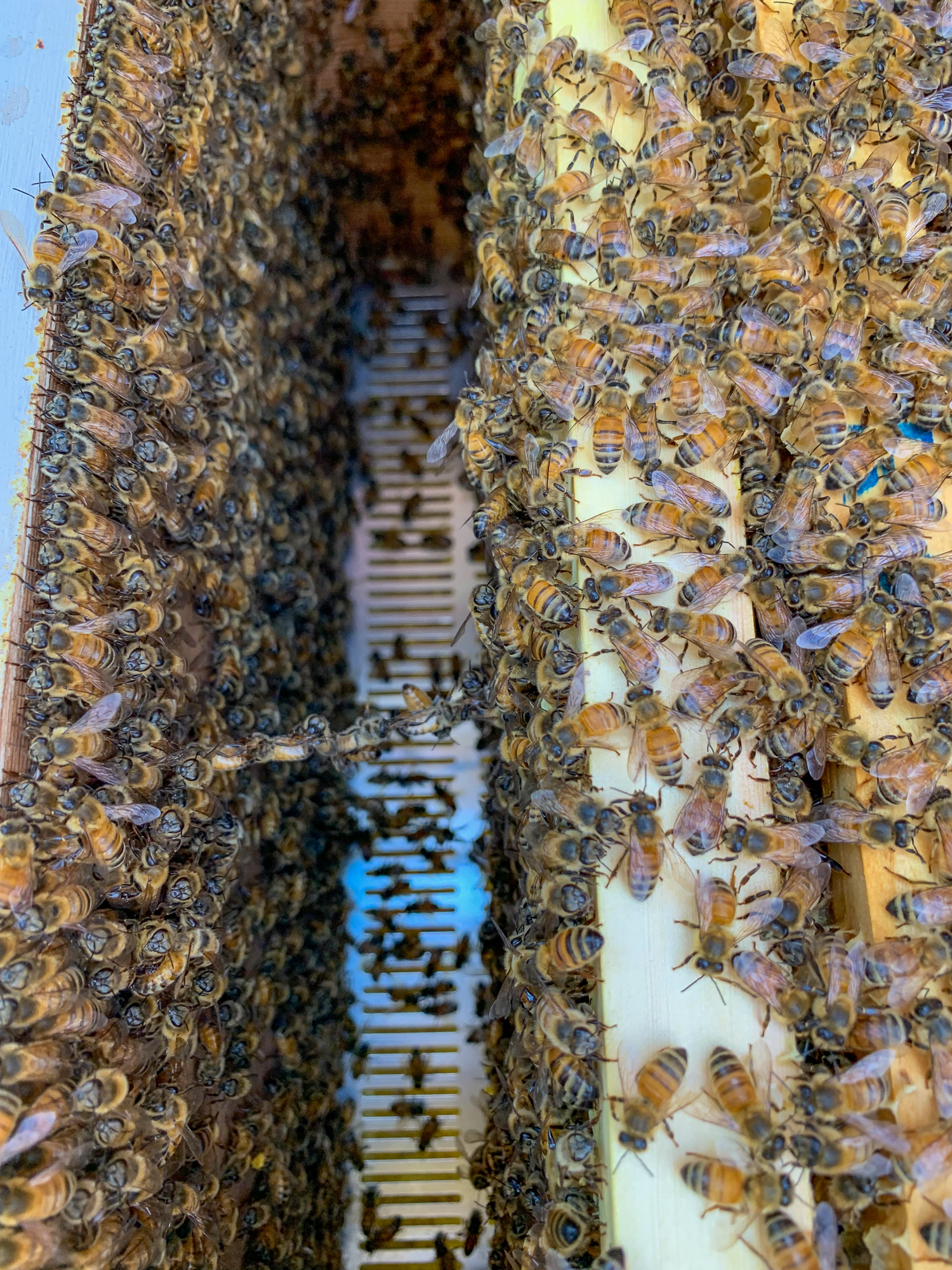
Despite being novices, we’re very happy and confident our hive seems to be thriving. The bee population has gone through the roof compared to when we first installed the NUC and our bees remain calm and non-aggressive, even when handling them.
Given the level of activity and progress within the hive, we’re hopeful we may be able to do our first honey harvest early in the new year!